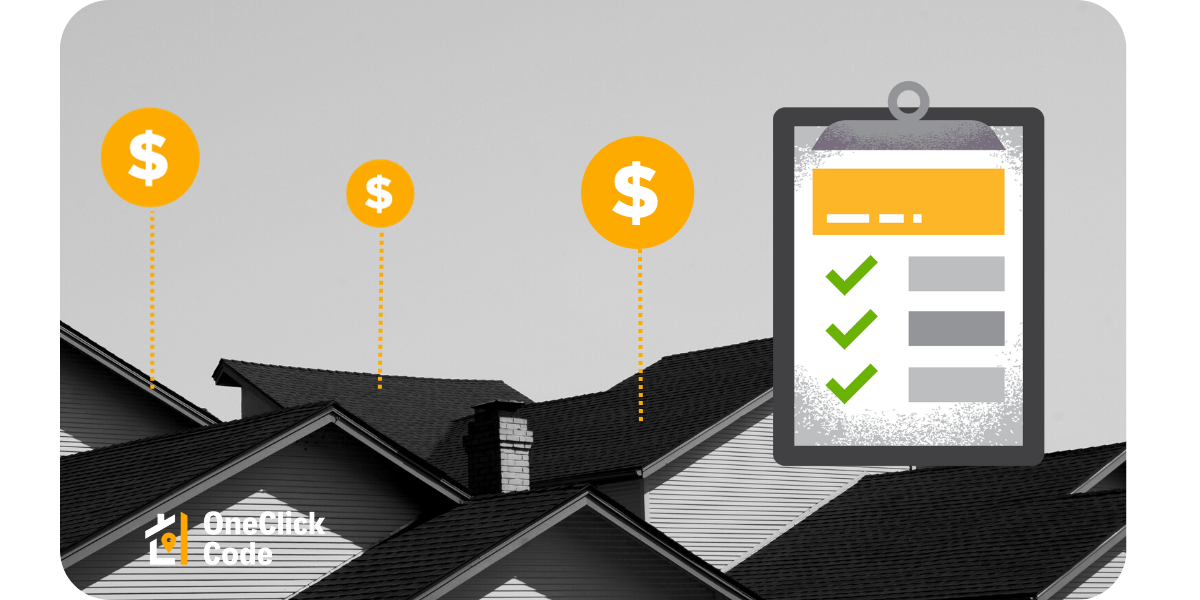
What Does Actual Cash Value Mean for a Property Insurance Claim?
Deciphering Actual Cash Value
At its core, 'Actual Cash Value' (ACV) represents a fundamental concept in property claims. It's the benchmark used to assess the value of insured property at the time of a loss or claim, considering an essential element - depreciation.
Let's envision a scenario: a property covered by an insurance policy, like a residential structure or a roofing system. In the event of a covered loss, the insurance carrier will evaluate the property's value based on its current condition, accounting for factors such as age, wear and tear, and market value. ACV takes into account the property's present state and what it would be worth in the current market.
Depreciation comes into play here. As properties age, they typically lose some of their initial value due to factors like wear, tear, and obsolescence. ACV considers this depreciation, subtracting it from the property's original cost. This calculation determines the amount the insurance carrier would be willing to pay to repair or replace the property, reflecting its decreased value over time.
To put it simply, if a roofing system, originally installed for $10,000 five years ago, sustains damage today, its ACV might be assessed at $6,000 due to its age and any wear it has endured. Understanding this fundamental concept is crucial when making a property claim and anticipating the coverage available. In the sections that follow, we'll delve deeper into ACV, its connection with replacement cost, and its role in the property claims process.
Differentiating ACV from Replacement Cost
While 'Actual Cash Value' (ACV) is a central concept in property claims, it's vital to differentiate it from another term often encountered in policy discussions: Replacement Cost. These two valuation methods have distinct implications for those involved in property claims:
ACV vs. Replacement Cost: The primary distinction between ACV and Replacement Cost lies in how they assess the value of covered property.
ACV: ACV considers depreciation when determining the property's value at the time of a loss. It reflects the current market value, considering factors such as age and wear and tear.
Replacement Cost: Replacement Cost is based on the cost of replacing the damaged property with a new one of similar kind and quality. It does not consider depreciation and provides coverage for the full cost of replacing the property with an equivalent, brand-new one.
When Each Applies: Insurance policies may offer either ACV, Replacement Cost, or a combination of both for different aspects of coverage.
ACV: ACV is commonly applied to property claims for elements like roofing systems and other structural components of a building. It ensures that policyholders can replace damaged property, accounting for depreciation.
Replacement Cost: Replacement Cost is more frequently applied to aspects like dwelling coverage for a home, and minimizing out-of-pocket expenses when replacing damaged or lost property.
It is essential for contractors, insurance adjusters, and insurance carriers to understand which valuation method their insurance policy employs for different aspects of property coverage, as this knowledge significantly impacts the compensation available in the event of a property claim.
The Role of ACV in Property Claims
Now that we've clarified what ACV is and how it differs from Replacement Cost, let's explore the practical role of ACV in property claims. Understanding this role is crucial for accurately assessing claims and making informed decisions:
Claims Settlements: When property claims are filed, the insurance carrier assesses the value of the damaged or lost property using ACV. This assessment takes into account the property's current market value, factoring in depreciation. The policyholder will receive a payout based on this ACV assessment.
Depreciation Impact: Depreciation can significantly impact the amount paid out in a property claim. Older properties with more wear and tear will have a lower ACV, potentially leading to a reduced payout compared to the cost of replacing the property with a new one.
Out-of-Pocket Expenses: Homeowners should be prepared for potential out-of-pocket expenses when handling property claims based on ACV. Since ACV reflects the depreciated value of the property, there may be a need to cover the difference between the ACV payout and the cost of purchasing a new replacement.
Importance of Coverage Review: Given the role of ACV in property claims, it is essential to periodically review insurance policies to ensure they align with the needs and expectations of not only the homeowner but also the contractors or other estimators on a property claim. For valuable properties, considering additional coverage or endorsements may be advisable.
By comprehending the role of ACV in property claims, those involved can navigate claims more effectively, anticipate potential costs, and make informed decisions about their coverage. In the upcoming sections, we'll explore the factors that influence ACV calculations and share tips for reviewing insurance policies to ensure they align with the needs and expectations of homeowners, contractors, insurance adjusters, and insurance carriers.
Factors Affecting ACV Calculation
Calculating 'Actual Cash Value' (ACV) isn't a one-size-fits-all process; instead, it's influenced by several factors that can vary from one property to another. Understanding these factors is essential for those dealing with property claims:
Depreciation Methods: ACV calculations consider different methods of depreciation, such as straight-line or functional obsolescence. The chosen method can affect how quickly a property's value depreciates over time.
Market Value: The current market value of a property plays a significant role in ACV assessment. This value is determined by factors like supply and demand, economic conditions, and regional variations.
Age and Condition: A property's age and condition directly impact its depreciation rate. Older properties with more wear and tear typically have lower ACV.
Replacement Cost: The cost of replacing the property with a new one is also considered. If a property can be replaced at a lower cost than its current market value, this can affect its ACV.
Local Factors: Regional variations can influence ACV. For example, a property may have a higher ACV in a market with strong demand for that specific type of property.
Material Specifics: Certain properties, like roofing systems, may have ACV calculations that consider unique factors, such as the type of roofing materials used and their condition.
The Importance of Reading the Fine Print
Given the complexities of 'Actual Cash Value' (ACV) and its impact on property claims, it's essential for homeowners, contractors, and adjusters to delve into the fine print of insurance policies. Here's why this step is crucial:
Understanding Policy Terms: Reviewing insurance policies helps in understanding the specific terms and conditions related to ACV, ensuring clarity about how ACV is applied to different aspects of property coverage.
Coverage Review: Periodic policy reviews ensure that coverage aligns with the current needs and expectations of the homeowner or contractors working on a claim. If a policy relies heavily on ACV and more extensive coverage is desired, it's an opportunity to explore additional options or endorsements.
Asking Questions: If any aspect of a policy is unclear, don't hesitate to ask the insurance provider for clarification. Understanding how ACV applies to coverage is a right of the policyholder.
Policy Adjustments: In some cases, those involved in property claims may wish to adjust their coverage to better reflect their preferences regarding ACV and replacement cost. This might involve discussing options like Guaranteed Replacement Cost or other enhancements with the insurance provider.
By reading the fine print and asking questions, contractors, insurance adjusters, and insurance carriers empower themselves to make well-informed decisions about their property coverage. When it comes to property claims, there's a clearer understanding of what to expect in terms of ACV assessments and potential out-of-pocket expenses. With this knowledge, they can navigate the property claims landscape with greater confidence and peace of mind. In the concluding section, we'll recap the key takeaways about ACV and its significance for those involved in property claims.
In the intricate world of insurance, understanding the term 'Actual Cash Value' (ACV) is akin to holding a map through the complex terrain of claims and coverage. ACV's role in determining the worth of insured property or items, factoring in depreciation, is a pivotal concept for policyholders. By distinguishing ACV from Replacement Cost, grasping its influence on claims settlements, considering the factors that affect its calculation, and diligently reviewing policy terms, policyholders gain the confidence and clarity needed to navigate insurance with precision. Empowered by this knowledge, they are better equipped to make informed decisions about their coverage and embrace the complexities of insurance with greater peace of mind.
About OneClick Code
OneClick Data is a trusted data partner revolutionizing the roofing industry by streamlining the building code-sourcing process and enhancing efficiency and transparency for all stakeholders. With their flagship product, OneClick Code, they have pioneered data automation of jurisdictional authority for building codes, permit fees, taxes, and manufacturer specifications nationwide. Empowering contractors, insurance professionals, and claim adjusters, OneClick Code provides instant access to trusted roofing codes with a simple click. With comprehensive tools and integrations, they enable rapid, precise, and scalable claims settlement, reshaping claims management with unmatched efficiency and accuracy. Welcome to the era of automated restoration intelligence. To learn more, visit our website www.oneclickdata.com.
